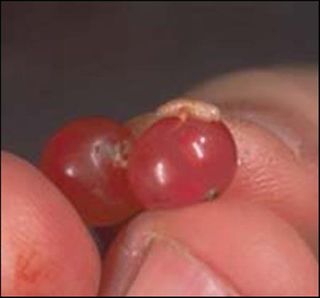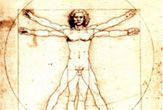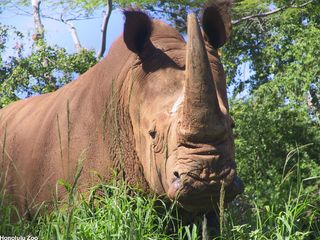Zonkeys, Wolphins and Ligers: Nature Loves a Hybrid

Although they capture the imagination, the liger (lion/tiger), the wholphin (whale/dolphin), and the zonkey (zebra/donkey) are all hybrids that are unlikely to be found in the wild.
But new research into a certain fruit fly may be evidence that hybrids are more common in nature than thought.
Like the mule (a cross between a male donkey and a female horse), many hybrids are unable to reproduce because the parents have different numbers of chromosomes. Some hybrids get around these difficulties by cloning themselves asexually.
"People used to think of hybridization as a dead-end process," said Dietmar Schwarz from Pennsylvania State University. "We basically are proposing that it should be considered as a possible means to speciation in animals."
In the past, biologists have considered the primary way to form new species is to separate a population (either through geography or habitat) and then let the two camps evolve into distinct species. In the tree of life, this would count as a "fork" between two branches.
But "knots" in the tree are also possible, where two different species have mated -- creating an offspring that is different from the parents.
Even assuming that they can reproduce, the survival of these hybrids relies on them being reproductively and ecologically isolated, Schwarz told LiveScience.
Sign up for the Live Science daily newsletter now
Get the world’s most fascinating discoveries delivered straight to your inbox.
Reproductive isolation means the hybrid cannot mate with one of its parent species. If this were not the case, then the offspring of hybrid and parent would have less genetic uniqueness, thereby foiling the creation of a separate species.
"The parent population will swallow the hybrids back up," Schwarz said.
Hybrids also need to have their own separate niche, or ecologic isolation, otherwise they will likely be out-competed by their parent species. Because satisfying both these conditions is hard to imagine, most biologists have neglected hybridization as a viable origin for new species.
But Schwarz and his colleagues have found a fruit fly hybrid, which apparently was able to distance itself from its parents.
The success of this hybrid is due to the fact that it and all its close relatives are host-specific parasites. The females of this type of fruit fly lay their eggs in one -- and only one -- kind of fruit. The maggots feed on the host fruit and then leave to become adult flies. But they return to the host plant (apparently recognizing the odor) to mate.
The hybrid fly achieved reproductive and ecologic isolation by picking a host -- in this case, the honeysuckle -- which is different from its parents.
Honeysuckle plants (genus name Lonicera) were introduced to North America by humans sometime in the last 250 years.
"Honeysuckle now runs wild all over Northeast coast," Schwarz said. "It's become an obnoxious weed."
Genetic analysis of the hybrid, which the scientists deem the "Lonicera fly," shows that it is a cross between the blueberry maggot and snowberry maggot flies. This new species took full advantage of the new niche supplied by the non-native honeysuckle.
Although this is only one specific case, the researchers point out that hybridization could be more prevalent, as there are a lot of animals -- like fleas and worms and parasitic wasps -- which could isolate themselves by switching hosts.
"We think this could be found in other host-specific organisms, which account for roughly 50 percent of animal species," Schwarz said.
A description of the "Lonicera fly" and its unique lineage is found in the July 28 issue of the journal Nature.
Did You Know?

Top 10 Useless Limbs (and Other Vestigial Organs)
Which Animal
is the Ugliest?




You Decide >>>

